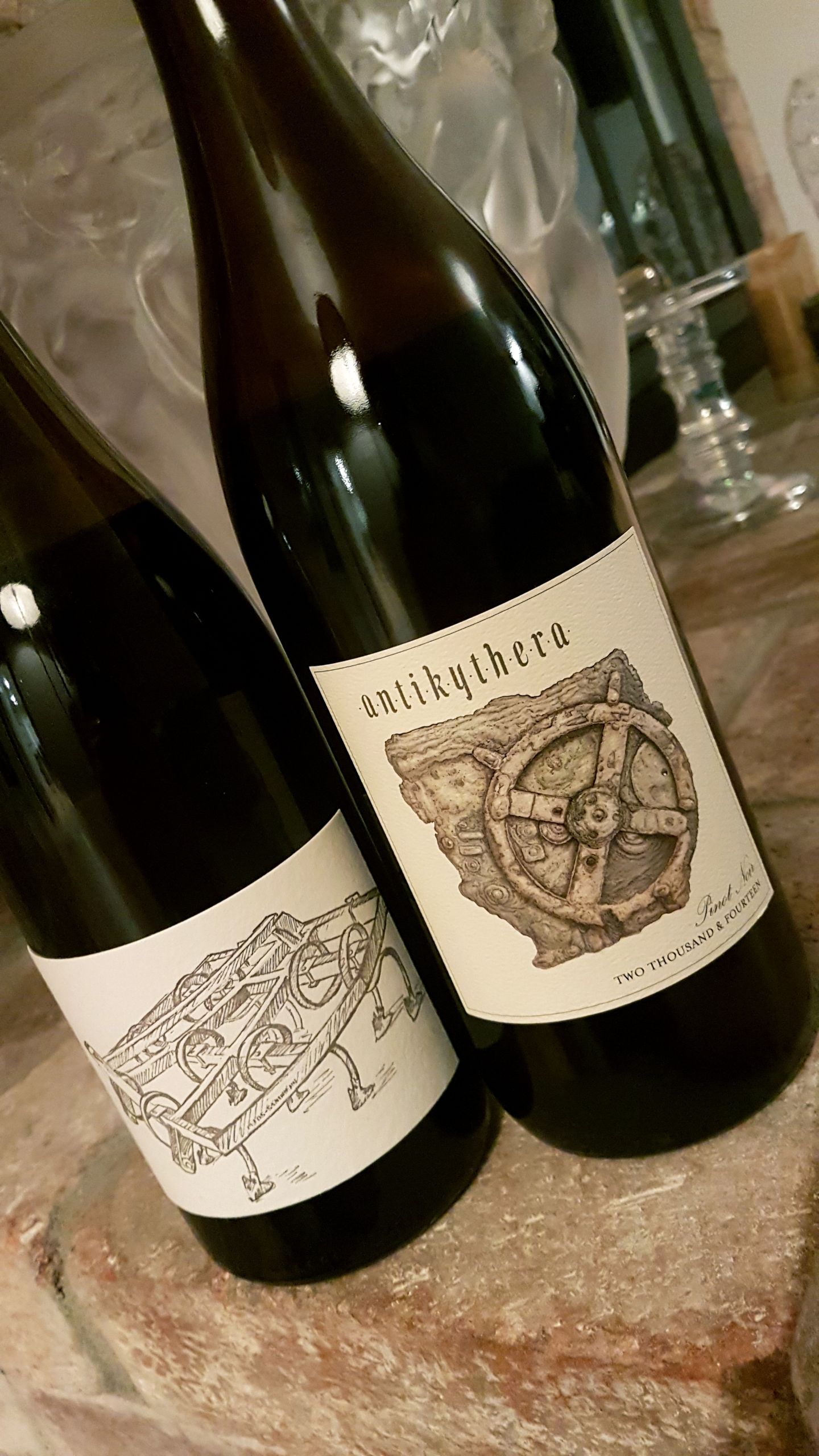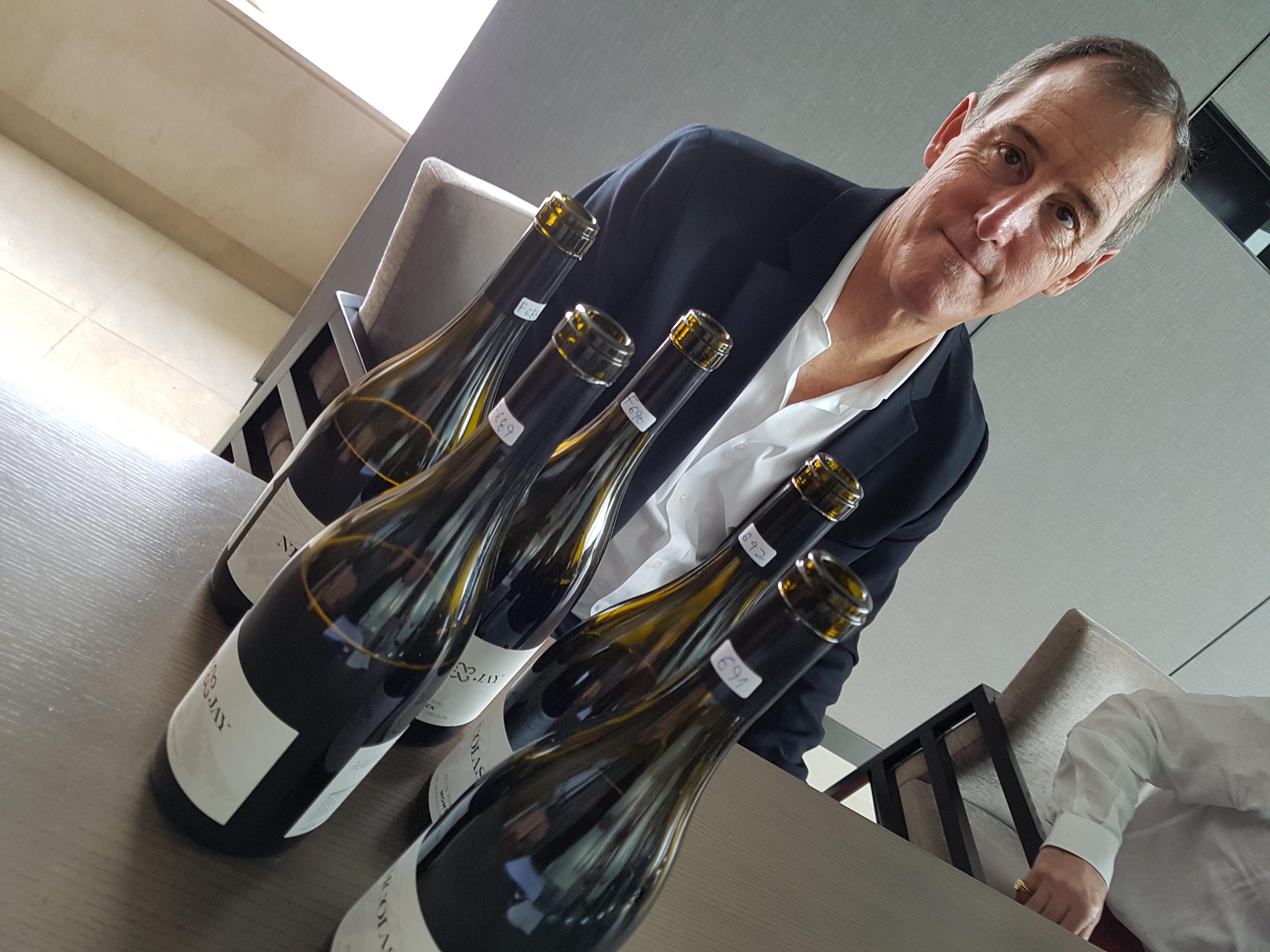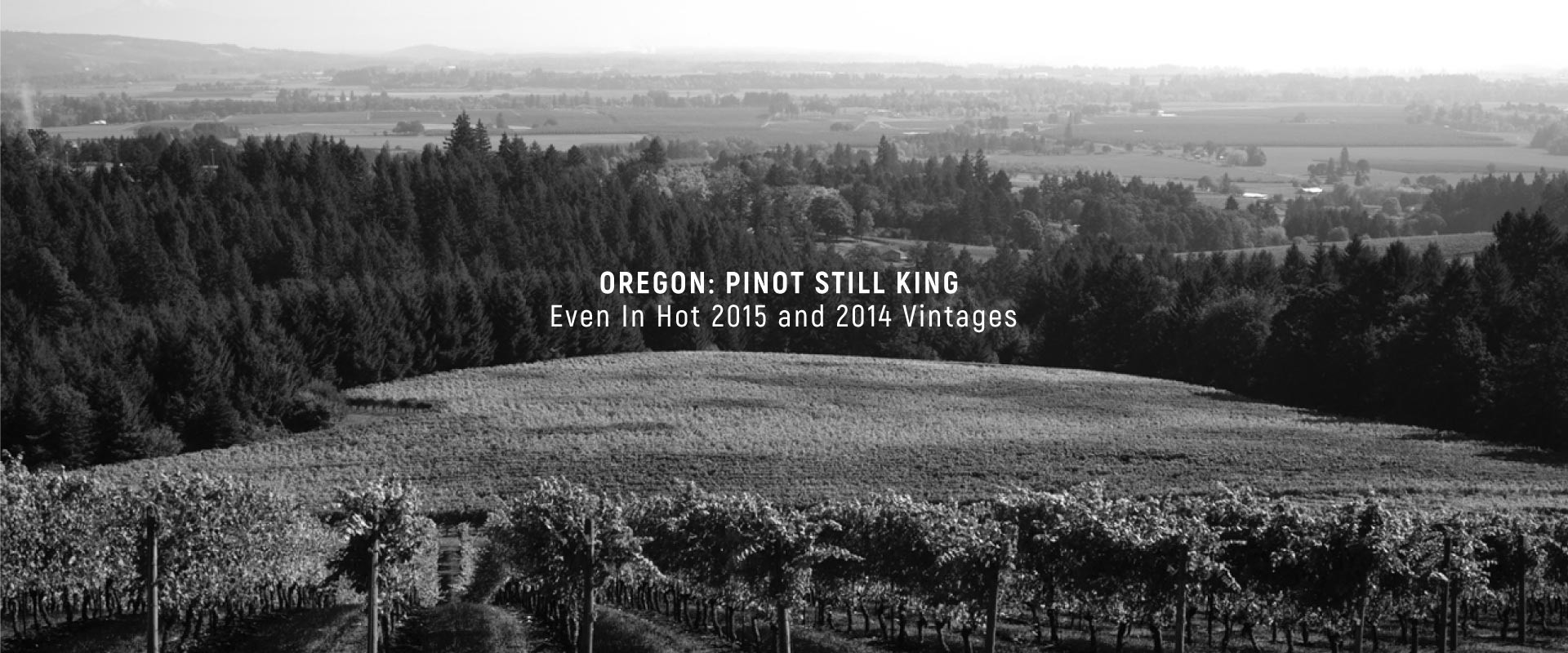Oregon: Pinot Still King Even In Hot 2015 and 2014 Vintages
It wasn’t too long ago when Oregon producers would worry almost inconsolably about bringing ripe pinot noir grapes to the sorting table each harvest. Indeed, most reference books will inform you that each and every year in the Willamette Valley brings the renewed struggle of picking fully ripe grapes before the rain clouds roll in from the Pacific Ocean. Yet the 350 Oregon wines I tasted for JamesSuckling.com earlier this fall — predominantly fabulous 2015s — were the product of no such vintage.
Indeed, the exceptional 2015 joins the stellar 2014 vintage (click here for JamesSuckling.com’s Oregon report from last year) as one the hottest years on record, with 2016 eclipsing them both — at least in terms of harvest date. Consider that as recently as the ‘90s, it wasn’t unusual for picking to go on into mid-November, whereas in 2016 the harvest began in late August!

Selection from Antica Terra: Pinot Noir Eola-Amity Hills Antikythera 2014 (On the right, 96 points)
Though 2014 and 2015 were both harvested in mid-September, the latter came in roughly a week earlier. Conversely, 2014 showed more sustained heat towards the tail end of the growing season, around the same time 2015 suddenly cooled down and saw some rain.
“The 2015 was a growing season with some ups and downs: plenty of heat during the summer and a big cool down during the final push of the growing season,” was how one winemaker outlined it to me in September. “By contrast, 2014 saw heat accumulation during a warm growing season, but the heat was fairly static, compared to the peaks and valleys of 2015.”
It seems the extra hang time in 2014, combined with a more linear maturation period, in some cases provided the conditions for more structured and complex pinots than in 2015. We rated 90% of the 2015s above 90 points — already an impressive number by any standard but still short of the 95% mark for the 2014s. Overall though, they are both wonderful years for Oregon pinot.
Yet as ever in Oregon, there are no hard-and-fast rules. Some of the 2015s are more fruit-forward than their 2014 counterparts, but other producers such as Domaine Drouhin, Shea Wine Cellar and Beaux-Frères are beginning to master hotter vintages and bettered the previous year’s efforts.
A desire and an increasingly adept hand among winemakers to tackle hotter vintages is a significant development, just as the climate appears to be warming up for good. It would be a mistake to make sweeping statements about the future and conclude that every vintage will be an early one (2017 seems to be a more “normal” vintage), but there can be no doubt about the general direction.
“When I first started in Oregon, the first three vintages were 1995, 1996 and 1997, three very cool vintages, but they were followed by a warmer year, 1998,” muses Siduri’s Adam Lee, who is a pinot master across Oregon but also Sonoma. “I tend to think that the trend is warmer but I don’t think that means that every vintage will be hotter and hotter. Overall, though, I think we are headed that way.”
Just the other day I popped open a 2013 Oregon — a wine born from a much wetter, colder set of conditions. While the pinot’s edgy fruit and borderline tart acidity was certainly beguiling, it wasn’t nearly as endearing as the completer packages from 2014 and 2015 from our tastings a few months ago.
“I don’t really fall into the camp of preferring vintages like 2013 and 2011,” admits Adam. “From a purely professional point of view, it is in those more difficult vintages that I do my best job of winemaking (assuming I make something good) — but they are still a pain in the ass. I think vintages like 2014-2016 produce better wines and are easier, and so truly I prefer them.”
Regardless, warmer vintages come with their own set of challenges. It’s still very much a balancing act knowing when to pick so that phenolic ripeness has set in but no trace of overripeness or excessive sugar levels have taken hold. The ramifications for organic and biodynamic viticulture, for which Oregon is a treasure trove, also remains to be seen, as higher temperatures can embolden diseases and pests, although less rainfall implies less microbe activity. And then there are those who say Oregon pinot noir is becoming too similar to the likes of Sonoma and Napa, although, for the moment, this seems to be more fiction than fact.

Jay Boberg from Nicolas Jay
“Each winemaker has their own opinion, but we’re all going to have to learn different skills to make what are very different wines,” affirms Jay Boberg of Nicolas-Jay, who made his first wines in the Willamette Valley in 2014 in partnership with Jean-Nicolas Meo, the owner and winemaker of Méo Camuzet, one of the legends of the Côte d’Or. “I do believe that terroir-driven, restrained wines with tension are more than possible in such warm vintages as the past few. You don’t have to make fruit bombs. It’s all about when you harvest: Bear in mind that we source fruit from across the valley and that picking times even within a vineyard can vary by as much as two weeks. Great winemakers make wine in difficult vintages.”
Perhaps most interesting of all is the effect climate change is having in pushing some Oregon viticulturists to reconsider their pinot clone selection. In the past, earlier-ripening Dijon clones were the gold standard here, but these warmer years have called for the reintroduction of pommard and wadenswil, which both ripen later.
“Already there is a change in planting going on,” says Adam. “Wineries were once planting on RG (riparia gloire) rootstock as it led to earlier ripening (and it also produced less crop) but that isn’t happening much now… I wonder if there will be some movement towards what we call California Heritage selections in Oregon. Swan, Mt. Eden (37), the Pisoni selection, Hanzell… All may make interesting wine in Oregon with the changes going on in the climate.”
The Oregon wine landscape is changing so rapidly, what is true this year may not be true the next year. Pinot is still very much king, and it’s hard to see Willamette Valley being deposed as the state’s premium wine region. Chardonnay is becoming more and more popular and we believe in the fantastic quality levels the variety can attain, even if this has yet to be caught onto by the market. We’re still waiting to be truly impressed by any of the other grapes being experimented with, but again the possibilities for this fast-evolving wine region seem to be endless. We will see next year when we taste even more Oregon wines and visit the region. —Jack Suckling, Tasting Editor
Please find below a video that we made last year:
